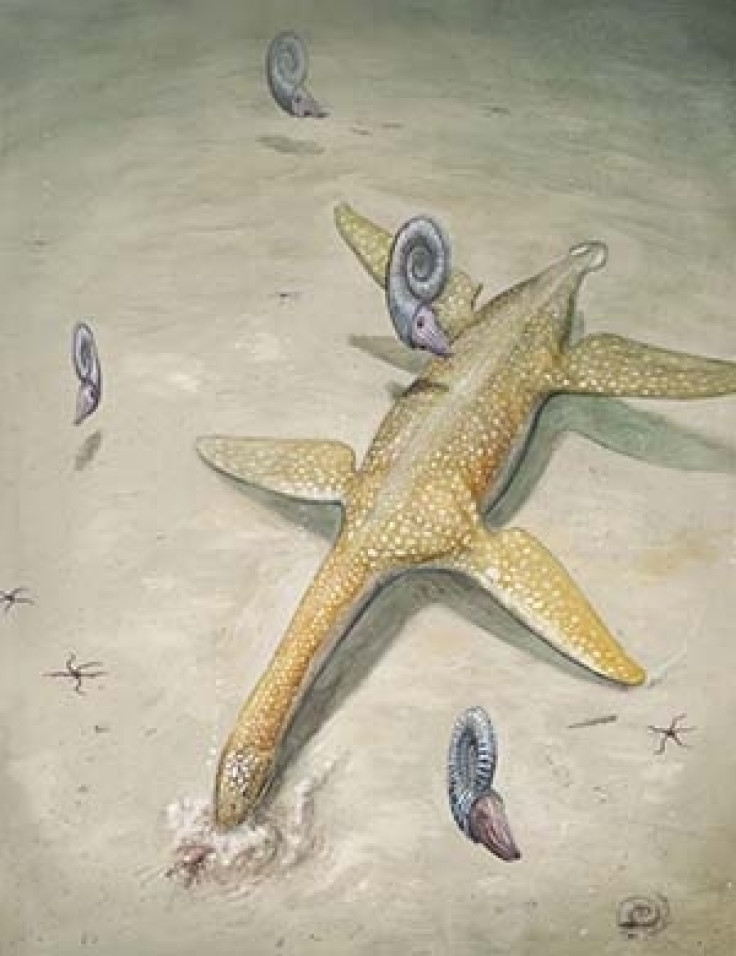Newly found 190 million-year-old Jurassic sea monster may be ancestor of modern sea predators
The new species of prehistoric sea creature was discovered in a clay pit near Bielefeld, Germany in the 1980's.
A newly discovered fossil of a Jurassic-era sea monster, which swam the Earth's oceans around 190 million years ago, could be related to modern-day sea predators such as sharks and killer whales.
The newly uncovered sea creature was named Arminisaurus schuberti after the ancient Germanic chieftain Arminius, who defeated the Roman legions at Teutoburg Forest near Bielefeld in 9 AD, and Siegfried Schubert, the amateur paleontologist who secured the remains for scientific study.
The new species of prehistoric sea creature was discovered in a clay pit near Bielefeld, Germany in the 1980's and was identified by a team of German and Swedish researchers. However, before the sea creature's fossil was studied, it was unfortunately broken up by mining machinery and only 40% of the remains could be uncovered.
"Arminisaurus is important because it lived in early law and we have very few identifiable plesiosaurfossil from that time. Only two other fossils from this mysterious era of plesiosaurus evolution have been named earlier. This makes Arminisaurus a very important addition to this group, globally," said Benjamin Kear, a lecturer at the Evolution Museum at Uppsala University and one of the researchers behind the study.

The Arminisaurus was around 10-13 feet (3-4 metres) and likely hunted small prey, such as fish and squid. Researchers also believe that the Arminisaurus may also have shared certain traits with the plesiosaurus creatures from the Cretaceous period, which lived 50 million years later. The new find could also help scientists further understand the early development and diversity of plesiosaurus.
"Plesiosaurs were amongst the most successful marine predators from the Age of Dinosaurs," said scientist Sven Sachs at the Naturkunde-Museum Bielefeld, where the fossil will be exhibited. "Some, such as the famous Liopleurodon, were colossal predators up to 15 metres (50 feet) long. They were the equivalent of white sharks and killer whales in the oceans today."
The research was published in the marine palaeontology journal Alcheringa.
© Copyright IBTimes 2024. All rights reserved.






